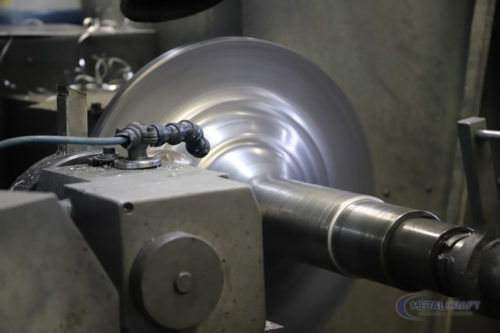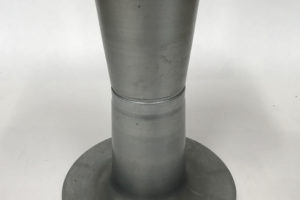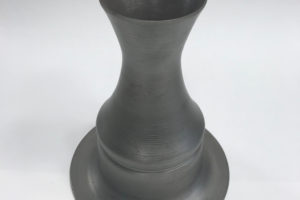Heating, ventilation, and air conditioning (HVAC) systems are essential components of commercial and industrial structures. However, more than just warming or cooling a designated space, HVAC systems are designed to improve air quality and ensure maximum comfort for anyone inside the building.
Commercial HVAC equipment is a subtype of HVAC system that maximizes their efficiency in large commercial buildings. Because these structures are typically much larger than residential buildings, special consideration must be taken regarding a number of factors.
How Does an HVAC System Work?
Whether industrial or commercial, HVAC systems consist of four basic components:
- The heat source
- The coolant source
- The delivery system
- The ventilation system
Commercial HVAC system engineers use these four basic aspects in just about any structural application. There are several types of commonly employed commercial HVAC systems, such as:
- Heat pumps
- Rooftop units
- Chillers
- Heaters
To heat a large building, a centralized heat pump within the HVAC system extracts warm air from the outside the building, or it warms up external air if conditions outside are colder than desired. A blower unit, or fan, delivers the warmed air throughout the building via a duct system that uses strategically placed vents.
How Long Do Commercial HVAC Systems Last?
Commercial HVAC systems generally have a life expectancy of 15–20 years. However, several factors could significantly reduce a commercial system’s lifespan.
For instance, extreme environmental conditions could stress the system and thereby increase wear and tear. Because most HVAC units operate continuously, this problem is especially pronounced, as there are few opportunities to make repairs.
Commercial HVAC Fabricated Parts
Whereas constant air volume (CAV) systems supply buildings with a continuous and stable air flow at adjustable temperatures, variable air volume (VAV) systems perform a converse operation by supplying variable air flow to different spaces within the building at a constant temperature.
VAV boxes are an important component of any VAV system. VAV boxes are strategically placed calibrated dampers that control airflow to specific locations within a building. Although many commercial applications use VAV boxes, these systems are not without problems. Some issues with VAV systems include:
- The time delays between the VAV box airflow sensors, the building controls, and the actuators cause frequent adjustments within the structure’s VAV system, resulting in a loss of efficiency and over-tasking other VAV boxes and HVAC components.
- Dirty airflow sensors can result in efficiency loss, meaning that facility managers must check and clean them on a regular basis.
- Adjustment delays between system components can cause airborne risks in critical or hazardous applications that require real-time ventilation.
 For most applications, the above problems with VAV systems are minor and not a cause for concern. However, manufacturing environments, laboratories, and other environments that rely on proper ventilation to safely remove harmful microorganisms or particulates from the air need a more thorough solution.
For most applications, the above problems with VAV systems are minor and not a cause for concern. However, manufacturing environments, laboratories, and other environments that rely on proper ventilation to safely remove harmful microorganisms or particulates from the air need a more thorough solution.
The Venturi valve offers a more responsive solution for these critical applications. Venturi valve are specifically engineered to facilitate superior regulation of air flow. Instead of relying on signals from the VAV system to adjust to changes in air pressure, Venturi valves measure pressure independently from the system and adjust without waiting for signal exchanges between system components, providing immediate airflow adjustments with ± 5% accuracy. Venturi valves are available in a variety of factory-programmed calibrations to suit the specific needs of a broad range of applications.
Commercial HVAC Fabrication by Metal Craft Spinning and Stamping
Metal Craft Spinning and Stamping is a leading manufacturer of long-lasting HVAC system components. We know that HVAC systems depend on tough, durable parts for both indoor and outdoor ventilation purposes. Because of this, we use the processes of metal spinning to build these components, In this operation, a spinning lathe forms a blank metal disc into the desired shape for the customers dimensional requirements.
Metal spinning from a certified provider is indispensable for producing parts such as HVAC venturi valves, as it is more cost-effective than multi-part assemblies. It is also less time consuming, versatile, and design changes are easily accommodated.
Metal spinning an HVAC venturi valve also prevents any possibility of pressure disruption from damage caused by inclement weather or improper welding of multiple pieces.
The automated metal spinning process also allows the cylindrical HVAC component to perform in all conditions and bears no welding line, ensuring optimal strength and appearance.
This low-cost process efficiently allows us to create large volumes of cylindrical HVAC components with minimal waste, and its tooling’s innovative design allows you to make changes to the production process at minimal expense.
We use both CNC machines and hand lathes to manufacture products according to customer needs. We work with a wide variety of materials, including:
- Cold-rolled steel
- Aluminum
- Stainless steel
- Copper
- Brass
Contact Us today to learn more about how our HVAC fabrication techniques, capabilities, and superior-quality HVAC venturi valves can be your next solution!




